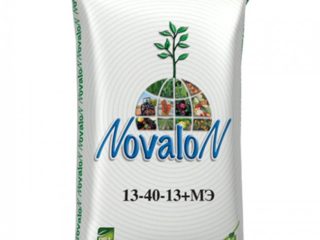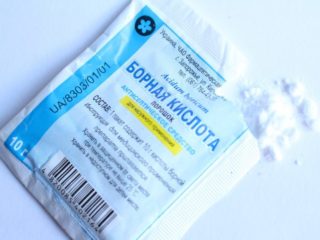Content
Treating roses with iron sulfate gives fairly good results in the fight against powdery mildew, rust, spider mites, aphids and other diseases and pests. The substance is highly chemically active, so it should be used only in late autumn. Vitriol is also sometimes used for foliar feeding during the growing season. Spraying helps cope with the consequences of iron deficiency.
Is it possible to treat roses with iron sulfate?
Iron sulfate is chemically iron(II) sulfate. It is also called iron sulfate, the formula of the substance is FeSO4. This is a contact fungicide that acts through direct contact with spores, mycelium and other parts of microscopic fungi.
It is a green powder, a crystalline salt that is highly soluble in water. They are used in different concentrations - from diluted 1% to saturated 5%.The spectrum of action is wide - iron sulfate helps prevent and cure roses from the following diseases: coccomycosis, powdery mildew - real and downy, gray rot, anthracnose, alternaria, scab, cladosporiosis.
You can and should use the solution to spray roses. It is especially effective in advanced cases when traditional folk remedies no longer help. The substance is highly active. Even if the concentration is slightly exceeded, plants can get burned. If the dosage is less than required, the desired effect will not be achieved.
What are the benefits of iron sulfate?
The main benefit of vitriol is that it acts quickly and effectively. The range of applications is wide - both from common fungal diseases and from many insects. The benefits of this drug come down to the following points:
- quick impact;
- large mass fraction of active iron (53%);
- the composition includes sulfur, which makes it possible to use the product as a microfertilizer;
- They are also used to repel rodents, which is especially important for protecting apple, pear and other fruit trees.

The drug is effective as a fungicide and fertilizing
Advantages and disadvantages
The use of iron sulfate for roses and other gardening areas in the fall has several advantages. Flower growers love the product for its ease of preparation and low cost.
Pros:
- has high antifungal activity, it is used to protect against various diseases;
- antibacterial effect;
- The powder is stored for a long time - you can immediately buy it for several seasons.
Although this product also has disadvantages.
Minuses:
- chemically aggressive substance. Therefore, it is used only in late autumn, or at least in early spring;
- after treatment, chemical burns may appear on the leaves;
- inhibits the beginning of rose growth in spring;
- the substance is easily washed off from the surface of the shoots, so in rainy and windy weather the treatment result is zero;
- Iron sulfate should not be taken together with drugs that give an alkaline reaction. It is important to take this into account when preparing tank mixtures (if necessary, chemical testing is carried out first).
When to spray roses with iron sulfate
The most effective and safest way is to treat roses with iron sulfate in the fall. The procedure is carried out immediately after leaf fall or during it. The optimal period is the middle, second half of October. The fact is that a fairly concentrated solution of 3%, 4% or 5% is used for processing. If you spray roses with it during the period of active growth, iron sulfate will burn the leaves and shoots. They will remain stained and otherwise damaged.
Many gardeners strive to process the bushes after the leaf fall ends. In fact, you can start working earlier, even when there are a few green leaves left. Moreover, vitriol will contribute to the final fall.
If the main deadline is missed, you can treat roses with iron sulfate in the spring. In this case, treatment is planned for the period from the end of March to the first ten days of April, when the buds have not yet swollen and sap flow has not begun. The logic is the same - you need to do it before the first shoots and leaves appear.

Processing is planned for late autumn
How to dilute iron sulfate for treating roses
Preparing a solution of iron sulfate for spraying roses is quite simple.The main condition is to carefully observe the amount of the drug, since even a slight excess of the concentration can lead to chemical burns of plants.
Instructions for preparing the solution are as follows:
- Wear gloves.
- Measure out the required amount of product.
- First dissolve in a small amount of water.
- Then bring to the total volume (10 liters).
To treat roses against various diseases or to use vitriol as a fertilizer, solutions of different concentrations are prepared - 1–5%. Accordingly, to prepare a small volume (per 1 liter), take powder with the active substance in the following quantities: 10 g, 20 g, 30 g, 40 g, 50 g.
If you prepare large volumes, then dissolve from 100 to 500 g of vitriol in 10 liters (standard bucket).
Spraying roses with iron sulfate
The composition is used to process roses for various purposes. For example, to prevent fungal diseases and pests, treatment is carried out in late autumn. The root zone is also watered. In some cases, roses need to be fertilized with iron. To do this, prepare a solution of weak concentration (no more than 1%) and carry out several sprayings with a break of one week.
From fungal diseases
For the prevention and treatment of fungal diseases of roses (scab, rust, various types of rot, powdery mildew and others), prepare a solution of iron sulfate of average concentration 3%. To do this, dissolve 30 g of the product in 1 liter of water or 300 g per 10 liters. The liquid is poured into a sprayer and processing begins. The product is used in early spring or late autumn.
The resulting solution is also used for watering the root zone. After autumn pruning, carefully remove leaves, as well as branches and other plant debris of roses. Then prepare a solution with a concentration of 3% and water the soil.This allows you to destroy not only fungal spores, but also insect larvae and other pests overwintering in the soil.

Iron sulfate helps prevent the development of dangerous fungal diseases
For pest control
The product is also used to control rose pests: aphids, rose scale insects, spider mites.
To do this, use the most concentrated solution of 5%. For example, 50 g are dissolved in 1 liter of water, and 500 g of the product are taken per 10 liters. The resulting liquid kills various insects well. But it is quite dangerous for the shoots and leaves of the roses themselves. Therefore, the composition for roses can only be used in early spring or late autumn. The rest of the time, folk or chemical means are used to destroy pests.
When compiling a tank mixture, it is necessary to exclude products that give an alkaline reaction - otherwise iron cations Fe2+ will be bound into sediment.
For feeding
Iron is a vital element for roses and other plants. If there is a deficiency (chlorosis), this is manifested by the following symptoms:
- Young foliage becomes pale yellow in color.
- Part of the crown becomes lemon yellow.
- Old leaf blades remain green.
- The veins are bright, including on young foliage.
- The tissues die along the edges and necrotic areas form.
- If you dig up a rose bush, you will see short brown roots, while many small white roots will be noticeable.
To quickly replenish iron deficiency, it is recommended to carry out foliar feeding with a 1% solution of iron sulfate. When spraying, you need to hit the leaves. Spraying is recommended to be done 3-4 times per season with a break of 7-10 days.Treatment is planned for calm and dry weather.
Security measures
In terms of toxicity, iron sulfate belongs to the third class. It is of little danger to humans and bees. However, when preparing the solution and carrying out the treatment, safety precautions must be observed:
- Carefully maintain the indicated dosage.
- Prepare the solution wearing gloves and carry out the treatment wearing a mask.
- Prevent children and pets from accessing the site.
- During treatment, do not drink, eat, or smoke.
- It is necessary to spray in the absence of strong wind and rain. At the same time, according to the forecast, the same weather should continue over the next two days.
- If the solution gets on your skin, wash with soap.
- If splashed into eyes, rinse with moderate pressure running water.
- After spraying, it is advisable to take a shower.
- If the solution gets inside, you should drink several tablets of activated carbon with water. If you have acute symptoms of poisoning, you should definitely consult a doctor.

When working with the drug, you must follow standard safety precautions.
Gardening tips
Treatment with iron sulfate has several features. Therefore, experienced summer residents recommend adhering to the following rules:
- The main processing time is late autumn. Before spraying, it is necessary to prune, remove fallen leaves and branches, and remove affected shoots. All these materials are removed and burned to prevent fungal spores, insect larvae and other pests from overwintering.
- Spraying is done so that the solution covers the entire bush. You need to ensure that both sides of the leaves are wet. An exception is foliar feeding for iron deficiency.In this case, it is enough to simply get on the outer sides of the leaf plates, but you should not touch the buds or the flowers themselves.
- It is better to use iron sulfate only separately, without combination with other fungicides, as well as antifungal drugs.
- After treatment, you need to wait for the bushes to dry. Then you can start covering. This should not be done earlier, since due to increased humidity the branches may rot under the mulch or other protective layer.
- Sometimes after spraying the foliage darkens, which is due to an excessive concentration of the active ingredient. It is no longer possible to help such a plant - you have to dig up the bush and destroy it.
Conclusion
Treatment of roses with iron sulfate is usually carried out in late autumn, immediately after leaf fall. At the same time, they plan to prune, and when freezing temperatures occur, they plan to cover for the winter. The drug is used to prevent fungal diseases. It can also be used as a foliar fertilizer to replenish iron deficiency.








